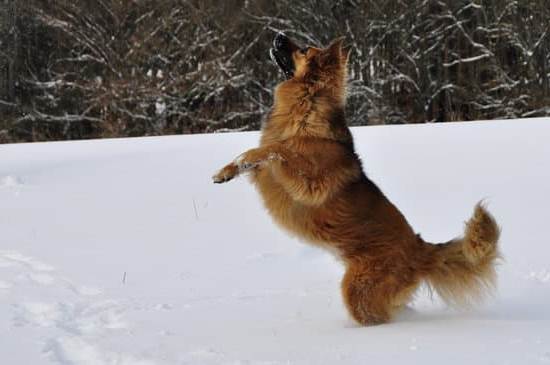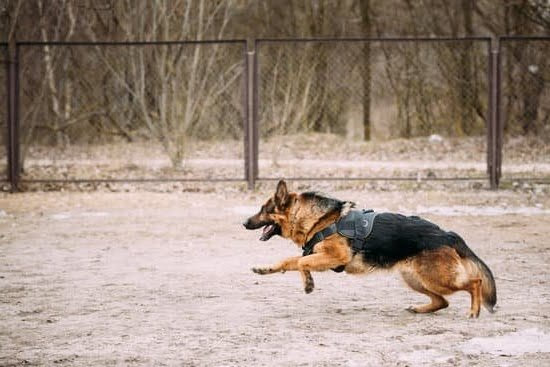Training a dog to walk on a leash is an essential skill for both the dog and its owner. It can provide them with exercise, mental stimulation, and the opportunity to bond while staying safe.
Whether you have a new puppy or an older dog that needs leash training, it’s important to understand the process and the benefits of doing so effectively. In this article, we will guide you through the steps of leash training your dog, from choosing the right gear to addressing common challenges.
The first step in effectively training a dog to walk on a leash is understanding why it’s so important. Leash training not only keeps your dog under control during walks but also prevents them from running into dangerous situations such as traffic or confrontations with other animals. A well-trained dog on a leash can also make it easier for both you and your pet to enjoy outdoor activities together without any worries.
In addition to understanding its importance, selecting the right leash and collar for your dog is crucial for successful training. The kind of equipment used can greatly impact your dog’s comfort and behavior, making it essential to find the best fit for your pet’s size, breed, and walking habits. By taking these initial steps with care and consideration, you set yourself up for success in teaching your furry friend how to walk on a leash confidently and safely.
Choosing the Right Leash and Collar for Your Dog
When choosing the right leash and collar for your dog, it’s important to consider their size, breed, and behavior. The type of leash and collar you select can have a significant impact on your dog’s comfort and safety during walks. Here are some factors to keep in mind when choosing the right equipment for leash training:
- Size and strength: For large or strong dogs, a sturdy and durable leash is essential to ensure they remain secure during walks. Consider a thicker, heavy-duty nylon or leather leash.
- Breed characteristics: Different breeds may require different types of collars. For example, dogs with short snouts may benefit from harnesses to prevent respiratory issues, while long-haired breeds may need collars that won’t mat or tangle their fur.
- Behavioral issues: If your dog tends to pull on the leash or exhibits aggressive tendencies, a no-pull harness or head halter may provide better control without causing discomfort.
In addition to considering these factors, it’s important to choose a collar and leash that fit your dog properly. The collar should be snug enough that it can’t slip over the dog’s head, but not so tight that it causes discomfort. Likewise, the length of the leash should allow your dog enough freedom to explore without feeling restrained.
Whether you opt for a standard buckle collar, martingale collar, harness, or head halter, always introduce your dog to their new equipment gradually. Allow them time to sniff and become accustomed to the collar or harness before attaching the leash. This will help prevent any negative associations with wearing the equipment and make the transition to leash walking smoother for both you and your pet.
Step-by-Step Guide to Introducing Your Dog to the Leash
Introducing your dog to the leash is an important first step in leash training. It is crucial for your dog to associate the leash with positive experiences and not as a form of restraint. Start by simply allowing your dog to sniff and investigate the leash while offering treats and praise, creating a positive association.
Once your dog is comfortable with the presence of the leash, you can gradually introduce wearing it for short periods of time indoors. Allow your dog to move around freely with the leash on, while continuing to offer treats and praise. This will help them get used to the sensation of wearing a collar and being attached to something.
After your dog has adjusted to wearing the collar and leash indoors, you can start incorporating short outdoor sessions. Begin in a quiet and familiar environment, allowing your dog to explore while on the leash. Keep these initial outdoor experiences positive by using treats and encouragement, helping your dog feel at ease while learning how to walk on a leash.
It’s important to take things slow during this process and be patient with your furry companion. Every dog will progress at their own pace when it comes to getting comfortable with wearing a collar and walking on a leash. By introducing these new experiences gradually and using positive reinforcement, you’ll set your dog up for success as you move forward with their leash training.
| Important Steps | Details |
|---|---|
| Introduce the leash indoors | Allowing your dog to wear the collar and become accustomed to being attached to something |
| Start outdoor sessions gradually | Begin in a quiet environment, using treats and encouragement |
| Be patient | Your dog will progress at their own pace; use positive reinforcement |
Teaching Your Dog Basic Leash Manners and Commands
Once your dog is comfortable wearing the leash and collar, it’s time to start teaching them basic leash manners and commands. The first command to focus on is “heel,” which means that your dog should walk close to you without pulling on the leash. Start by walking with your dog on a short leash, keeping them on your left side if possible.
Whenever they start to pull ahead, stop walking and wait for them to come back to your side. When they do, praise them and continue walking. Consistent repetition of this process will help your dog understand that pulling on the leash does not result in moving forward.
Another important command for leash training is “let’s go.” This command can be used when you want your dog to start walking again after stopping or sitting at a crosswalk. Use a happy, encouraging tone when giving this command, and reward your dog with treats or verbal praise when they respond correctly.
It’s also essential to teach your dog a release word like “okay” or “free” that lets them know when they are allowed to explore and move around more freely while on the leash. This can be especially helpful during off-leash playtime at the park or when you want to give your dog some freedom during a walk as a reward. With patience, consistency, and positive reinforcement, you can effectively teach your furry friend basic leash manners and commands.
| Leash Training Command | Description |
|---|---|
| “Heel” | Teaches the dog to walk close without pulling |
| “Let’s Go” | Encourages movement after stopping or sitting |
| Release Word (“Okay”/”Free”) | Allows the dog some freedom while still being leashed |
Addressing Common Leash Training Challenges and Troubleshooting Tips
Dealing With Pulling
One of the most common challenges in leash training is dealing with a dog that pulls. This behavior can be frustrating for both the owner and the dog. To address this issue, it’s important to remain consistent and patient. When your dog starts pulling, stand still and wait for them to calm down before continuing the walk. You can also try changing directions or using a command like “heel” to encourage them to walk by your side.
Fear or Anxiety
Some dogs may exhibit fear or anxiety when on a leash, especially if they have not been properly introduced to it. In such cases, it’s crucial to take things slow and gradual. Start by simply allowing your dog to get used to wearing the collar and leash indoors before attempting to go outside. Providing positive reinforcement, such as treats and praise, can help alleviate their anxiety and create positive associations with the leash.
Distractions and Reactivity
It’s not uncommon for dogs to become reactive or easily distracted while on a leash, particularly when encountering other animals or people during walks. To address this challenge, consider implementing additional training techniques such as desensitization exercises and counter-conditioning. It’s also important to remain calm and assertive as a handler, as dogs can pick up on their owner’s emotions.
By addressing these common leash training challenges with patience, consistency, and positive reinforcement, you’ll be better equipped to help your dog overcome any obstacles in their leash walking journey. Remember that every dog is unique, so it’s essential to tailor your training approach according to their individual needs and behavior traits.
Incorporating Positive Reinforcement and Rewards Into Your Leash Training Routine
Understanding the Power of Positive Reinforcement
Positive reinforcement is a training method that involves rewarding your dog for good behavior. This can include verbal praise, treats, toys, or affection. When it comes to leash training, positive reinforcement can be an effective way to encourage your dog to follow your lead and walk calmly on the leash. By using rewards, you are creating a positive association with walking on the leash, making it a more enjoyable experience for your furry friend.
Choosing the Right Rewards
When incorporating positive reinforcement into your leash training routine, it’s important to choose the right rewards for your dog. This could vary depending on what motivates your individual pet – whether it’s food treats, a favorite toy, or simply verbal praise and affection. Experiment with different types of rewards to determine what works best for your dog and use these as incentives during leash training sessions.
Utilizing Rewards During Leash Training
During leash training sessions, be sure to have plenty of rewards on hand to reinforce positive behaviors. Start by giving your dog a treat or praise when they show interest in the leash, allowing you to gradually introduce it without any negative associations.
As you progress with the training, continue to reward your dog for walking calmly on the leash without pulling or distractions. Consistency is key when using positive reinforcement, so be sure to reward good behavior every time it occurs during training sessions.
By incorporating positive reinforcement and rewards into your leash training routine, you can effectively teach your dog good leash manners while strengthening the bond between you and your pet. Remember that patience and consistency are essential when using this training method, but with time and practice, you’ll likely see great results in your dog’s walking behavior.
Taking Your Dog for Their First Walk on a Leash
Once your dog has become familiar with the leash and has mastered basic commands, it’s time to take them for their first walk on a leash. This is an exciting milestone in your dog’s training journey, but it’s important to be prepared for any challenges that may arise. Here’s what to expect and how to handle any issues when taking your dog for their first walk on a leash:
- Start in a quiet, familiar environment: Begin by taking your dog for their first walk in a quiet, familiar environment such as your backyard or a nearby park with minimal distractions. This will allow them to get used to walking on the leash without being overwhelmed.
- Monitor their behavior: Pay close attention to your dog’s body language and behavior during the walk. Are they pulling on the leash? Do they seem anxious or scared? It’s important to be aware of any signs of discomfort so that you can address them accordingly.
- Stay calm and patient: If your dog shows signs of resistance or discomfort during their first walk on a leash, remain calm and patient. Avoid getting frustrated or raising your voice, as this can create negative associations with the leash and walking.
- Use positive reinforcement: Encourage good behavior by offering verbal praise, treats, and affection when your dog walks nicely on the leash. Positive reinforcement will help them associate walking on the leash with pleasant experiences.
Remember that every dog is unique, and some may require more time and patience than others when it comes to adjusting to walking on a leash. By remaining consistent with your training methods and maintaining a positive attitude, you can help your dog become a well-behaved and confident walker in no time.
Maintaining Good Leash Walking Habits and Consistency for Long-Term Success
Once your dog has mastered the basics of leash training, it’s essential to maintain good leash walking habits and consistency for long-term success. Dogs thrive on routine and structure, so it’s crucial to continue reinforcing positive leash behavior and commands.
Consistency is key when it comes to maintaining good leash walking habits. This means always using the same commands, reinforcing desired behaviors, and addressing any disobedience immediately. If your dog starts to pull on the leash or exhibit unwanted behaviors, such as jumping or barking at other dogs, it’s important to address these issues promptly and consistently.
In addition to consistency, regular practice is essential for maintaining good leash walking habits. Even after your dog has become proficient at walking on a leash, it’s important to continue practicing regularly to reinforce positive behaviors.
This can include short walks around the neighborhood or trips to a nearby park where your dog can practice walking on a leash in different environments. Regular practice will help solidify good habits and ensure that your dog remains well-behaved on walks for years to come.
Additional Tips for Specific Breeds or Behavior Issues Related to Leash Walking
When it comes to leash training, each dog breed may present different challenges and behavior issues. Understanding the unique characteristics of your dog’s breed can help you tailor your leash training approach for better results. Some breeds, such as herding dogs or hunting breeds, may have a natural tendency to pull on the leash due to their instincts.
In contrast, smaller breeds may struggle with leash manners due to their size and high energy levels. By recognizing these breed-specific traits, you can adjust your training methods accordingly.
For dogs with a strong prey drive, such as hounds or terriers, leash walking can be particularly challenging. These breeds may be easily distracted by scents or small animals, leading to pulling or erratic behavior on the leash.
To address this issue, consider using a harness instead of a collar for better control over your dog’s movements. Additionally, incorporating “leave it” and “focus” commands into your training routine can help redirect your dog’s attention when they become fixated on something during walks.
In some cases, certain behavior issues unrelated to breed characteristics can also impact leash walking. For instance, if your dog displays fear or anxiety while leashed, it’s important to address these underlying emotions before attempting regular walks. Gradual desensitization and positive associations with the leash and outdoor environment can help build confidence in these situations. Seek guidance from a professional trainer or behaviorist if you encounter persistent challenges related to specific behavior issues during leash training.
Resources and Recommended Tools for Leash Training Success
In conclusion, leash training is an essential skill for any dog owner to master in order to ensure the safety and enjoyment of walks with their furry companion. By understanding the importance of leash training, choosing the right equipment, and following a step-by-step guide to introducing your dog to the leash, you can set both yourself and your pet up for success in mastering this skill.
Teaching your dog basic leash manners and commands, addressing common challenges, and incorporating positive reinforcement into your training routine are crucial steps in achieving long-term success. Additionally, it’s important to maintain good leash walking habits and consistency for continued improvement. Each breed may have specific needs or behavior issues related to leash walking that should be addressed with additional tips and resources tailored to those particular needs.
Finally, having access to recommended tools for leash training success can greatly aid in the process. Whether it’s specialized leashes, harnesses, or treats used for positive reinforcement, these resources can provide additional support as you work towards ensuring that your dog walks on a leash with ease and obedience. With dedication, patience, and the right approach, you can successfully train your dog to walk on a leash and enjoy many happy walks together.
Frequently Asked Questions
How Do I Train My Dog to Walk on a Leash Without Pulling?
Training your dog to walk on a leash without pulling requires patience and consistency. Start by teaching them to focus on you by using treats or toys to keep their attention.
Encourage them to walk beside you rather than in front, and whenever they start pulling, stop walking until they relax the tension on the leash. Reward them for walking calmly by your side and gradually increase the duration of these calm walks.
How Do I Train My Dog to Walk Beside Me for Walks?
To train your dog to walk beside you for walks, it’s important to establish clear communication and reinforce positive behavior. Use positive reinforcement such as treats or praise to encourage them to stay by your side.
Start with short training sessions in a quiet environment, gradually increasing the difficulty as they progress. Consistency is key, so be patient and persistent in teaching your dog this desirable behavior.
How Do I Stop My Dog From Pulling on the Leash When I Walk?
If your dog pulls on the leash when you walk, there are several techniques you can use to stop this behavior. One effective method is to stop walking whenever they start pulling, wait for them to relax the tension on the leash, and then resume walking.
Another approach is to change direction often while walking so that your dog has to pay attention to where you’re going rather than pulling forward. Consistency in applying these techniques is essential for successfully stopping your dog from pulling on the leash during walks.

Welcome to the blog! I am a professional dog trainer and have been working with dogs for many years. In this blog, I will be discussing various topics related to dog training, including tips, tricks, and advice. I hope you find this information helpful and informative. Thanks for reading!





